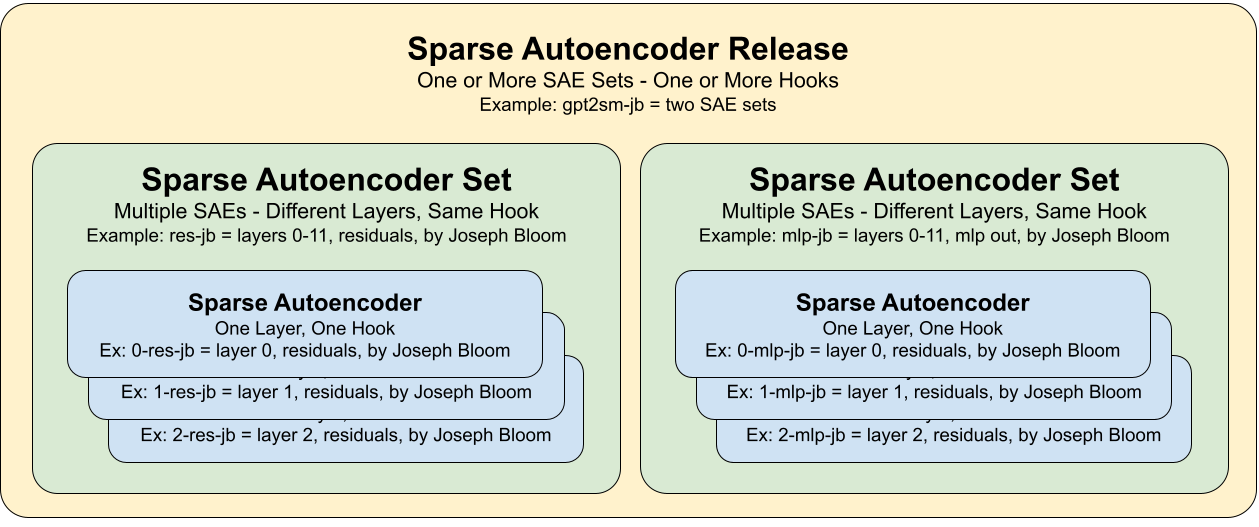Sparse Autoencoder
⚠️ Warning: These docs are in the process of being updated - the latest significant revision was September 2024. Neuronpedia has expanded beyond SAE-specific research to include probes, "concepts", transcoders, and more. Additionally, Neuronpedia has many more functionalities than documented here.
Sparse Autoencoder Basics
Sparse Autoencoders (SAEs) are a way to extract interpretable features from models. Here is an explainer on SAEs.
Every Sparse Autoencoder has a unique identifier in the format of MODEL@LAYER-DESCRIPTION-AUTHOR.
Example
The following is the GPT2-SMALL@9-RES-JB SAE, which is short for GPT2-Small, Layer 9, Residual Stream, by Joseph Bloom. This SAE is located at https://neuronpedia.org/gpt2-small/9-res-jb.

Key Terms: SAE Set & SAE Release
Since each SAE (currently) only corresponds to one layer, and because researchers usually release more than one SAE at a time, we have two levels of groupings for organizing SAEs.
- SAE Set: One or more SAEs that analyze the same hook and use the same method, across different layers.
- Example: RES-JB is an SAE Set that has 12 SAEs based on the residual stream of the 12 layers of GPT2-Small.
- SAE Release: One or more SAE Sets. This allows grouping of multiple hooks and methods. An SAE Release usually corresponds with the release of a research paper and contains all the SAEs trained/analyzed in it.
